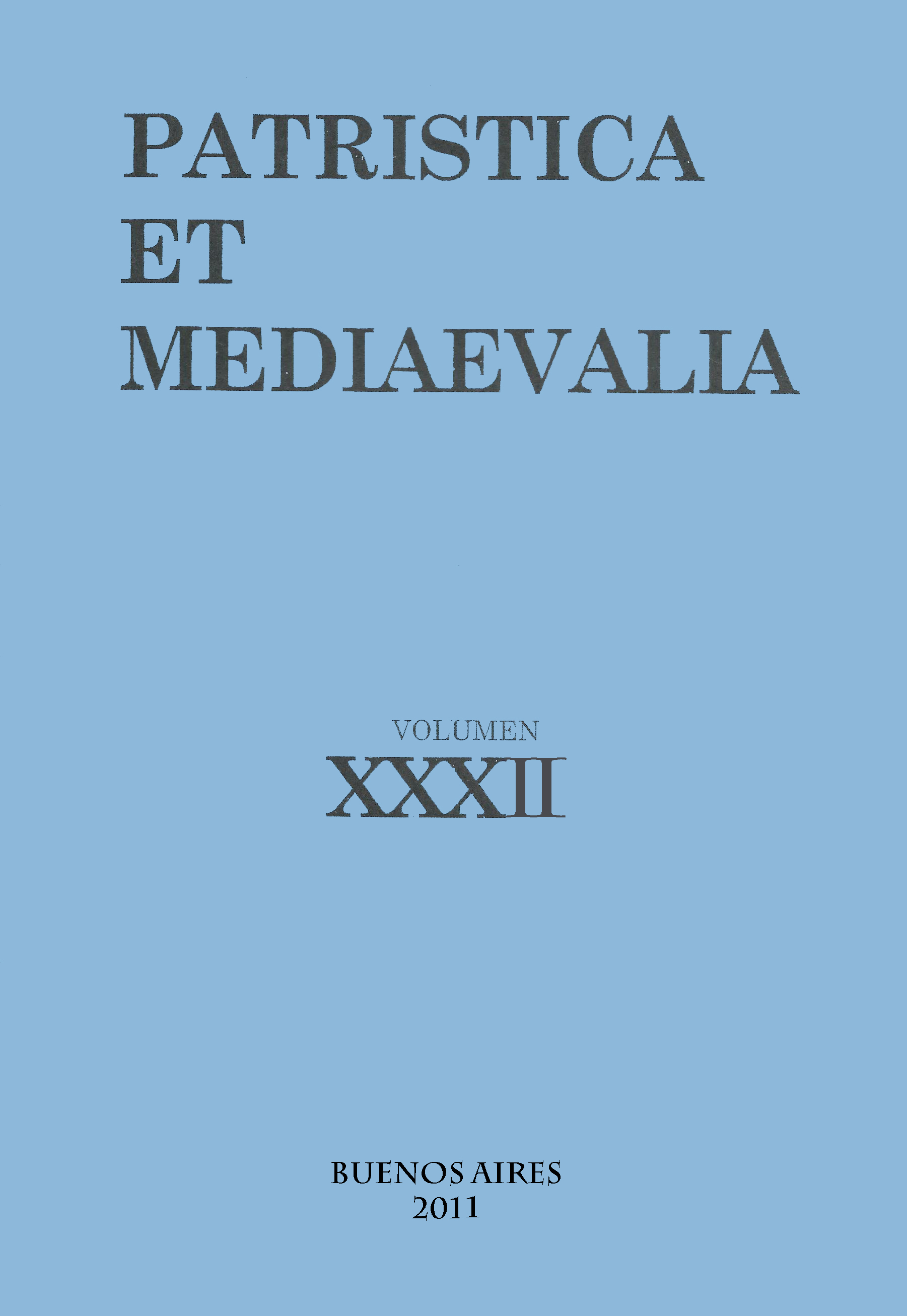The Quaestio disputata de felicitate of Master Giacomo of Pistoia. Notes for a New Discussion Regarding His Sources
Abstract
This paper aims at showing the influence of the wrong application of the expression "latin averroism" in a particular case: the Quaestio disputata de felicitate of the italian master Giacomo of Pistoia. In order to do so, we propose (1) a new discussion over Giacomo of Pistoia's sources, which will allow to deepen a topic previously suggested by Kristeller: the possible influence of Thomas Aquinas in the Quaestio disputata de felicitate and (2) a reconsideration of the relation between the De summo bono by Boecio of Dacia and the Quaestio disputata de felicitate by Giacomo of Pistoia. It is shown, in the conclusions, the inconvenience of establishing, over such texts, rigid historiographical classifications that do not contribute to a detailed study of the sources.Downloads
References
Ardizzone, M. L. (2002). Pleasure and Intellectual Happiness. En Ardizzone, M. L. Guido Cavalcanti: the other Middle Ages, Toronto Italian Studies. Toronto: University of Toronto Press, 103-163.
Argerami, O. (1981). Aristóteles y las disputas escolásticas del siglo XIII. Sapientia, 36, 263-272.
Bianchi, L. & Randi, E. (1990). Le verità dissonanti: Aristotele alla fine del Medioevo. Roma/Bari: Laterza.
Bianchi, L. (1990). Il vescovo e i filosofi: la condanna parigina del 1277 e l’evoluzione dell’aristotelismo scolastico. Bergamo: Pierluigi Lubrina.
Bianchi, L. (2005). Felicità intellettuale, ‘ascetismo' e 'arabismo'. Nota sul De summo bono di Boezio di Dacia. En: Bettetini, M. & Paparella, F. D. (eds.). La felicità nel medioevo. Louvain-la-Neuve: FIDEM, 15-34.
Bianchi, L. (2007). La ricezione di Aristotele e gli ‘aristotelismi’ del XIII secolo. En: Montesinos Sierra, J. L. (ed.). Ciencia y cultura en la Edad Media (Actas del Seminario Orotava de Historia de la Ciencia, encuentros VIII y X). Canarias, 293-310.
Bottin, F. (1989). Ricerca della felicità e piaceri dell’intelletto: il sommo bene-La felicità suprema Firenze: Nardini Press.
Corti, M. (1981). Dante a un nuovo crocevia. Firenze: Sansoni-Le Lettere.
De Libera, A. (2000). Pensar en la Edad Media (trad. de J. M. Ortega y Goncal Mayos). Barcelona: Anthropos.
Fioraventi, G. (2005). La felicità intellettuale: storiografia e precisazioni. En: Bettetini, M. & Paparella, F. D. (eds.). La felicità nel medioevo. Louvain-la-Neuve: FIDEM, 1-12.
Gauthier, R. A. (1947/1948). Trois commentaires ‘averroïstes’ sur l’Ethique à Nicomacque. AHLDMA, 16, 187-336.
Grabmann, M. (1931). Der lateinische Averroismus des 13. Jahrhunderts und seine Stellung zur christlichen Weltanschauung. Mitteilungen aus ungerdruckten Ethikkommentaren. München: Oldenbourg.
Kristeller, P. O. (1955). A philosophical treatise dedicated to Guido Cavalcanti: Magister Jacobus de Pistorio and his Quaestio de felicitate. En Medioevo e Rinascimento: Studi in onore di Bruno Nardi, 2 vols. Firenze: G. C. Sansoni, 425-463.
Mandonnet, P. (1899). Siger de Brabant et l’averroïsme latin au XIIIe siècle. Fribourg: Fribourg Suisse Librairie de l'Université.
Quiles, I. S.J. (1945). Introducción. En Tomás de Aquino. Tratado de la unidad del entendimiento contra los averroístas, trad. Ismael Quiles. Buenos Aires: Editorial Espasa-Calpe.
Renan, E. (1946). Averroes y el averroísmo. Buenos Aires: Editorial Lautaro (1era edición 1852, París).
Zavattero, I. (2005). La Quaestio disputata de felicitate di Giacomo da Pistoia. Un tentativo di interpretazione alla luce di una nuova edizione critica del testo. En: Bettetini, M. & Paparella, F. D. (eds.). La felicità nel medioevo. Louvain-la-Neuve: FIDEM, 355-410.
1. The authors who publish in this magazine accept the following conditions:
-
They retain the copyright and grant to the magazine the right of the first publication, with the work registered under the Attribution-ShareAlike 4.0 International License that allows third parties to use what is published as long as they mention the authorship of the work and the first publication in this magazine.
-
They can make other independent and additional contractual agreements for the non-exclusive distribution of the version of the article published in this magazine (eg. include it in an institutional repository or publish it in a book) provided that they clearly indicate that the work was first published in this journal.
-
They are allowed and recommended to publish their work on the Internet (for example on institutional or personal pages).
2. AutoArchive Conditions. Authors are allowed and encouraged to distribute post-print electronic versions of their manuscripts because it promotes their circulation, a possible increase of quotation and a major reach among the Academic community. Color RoMEO: blue.













